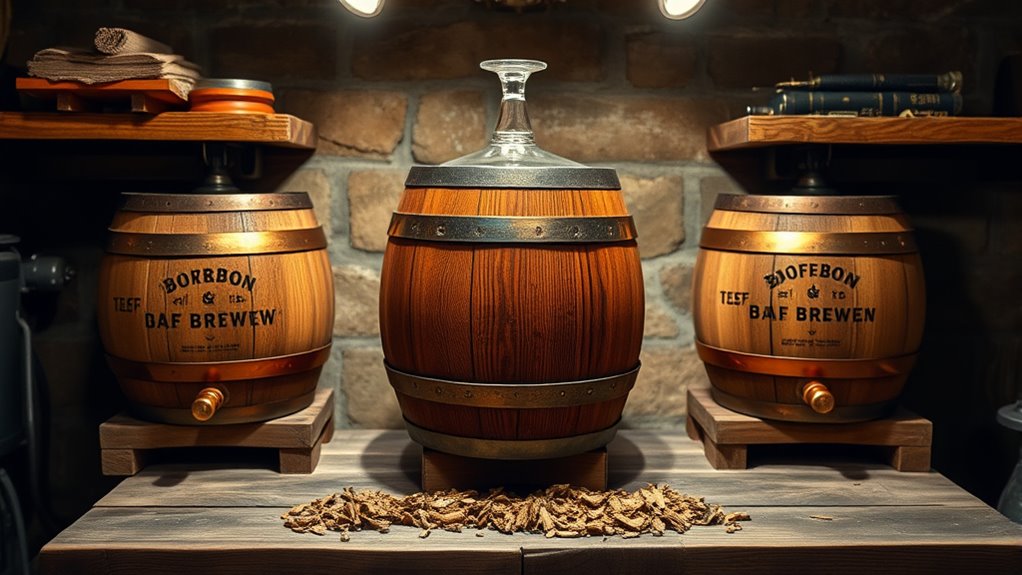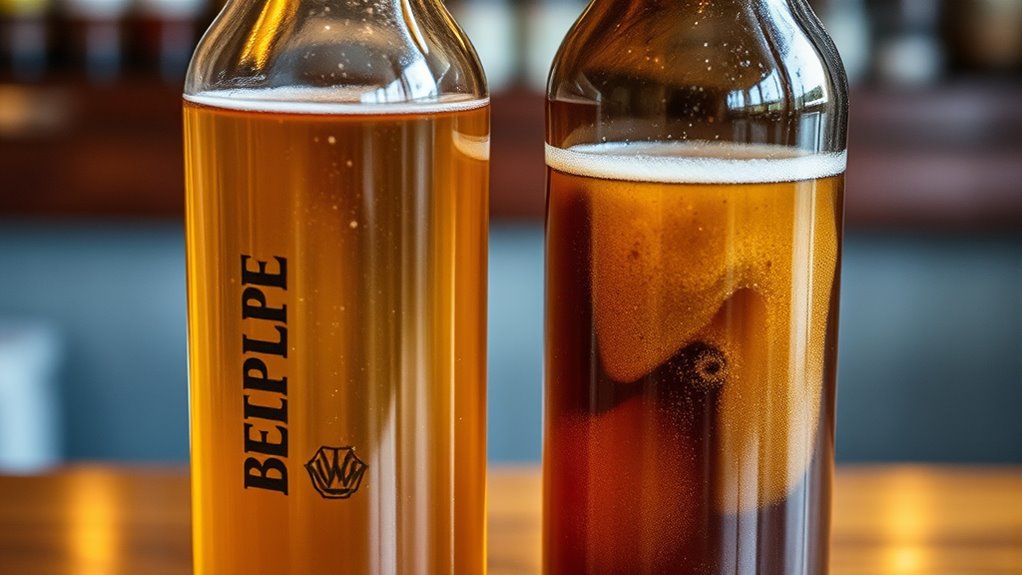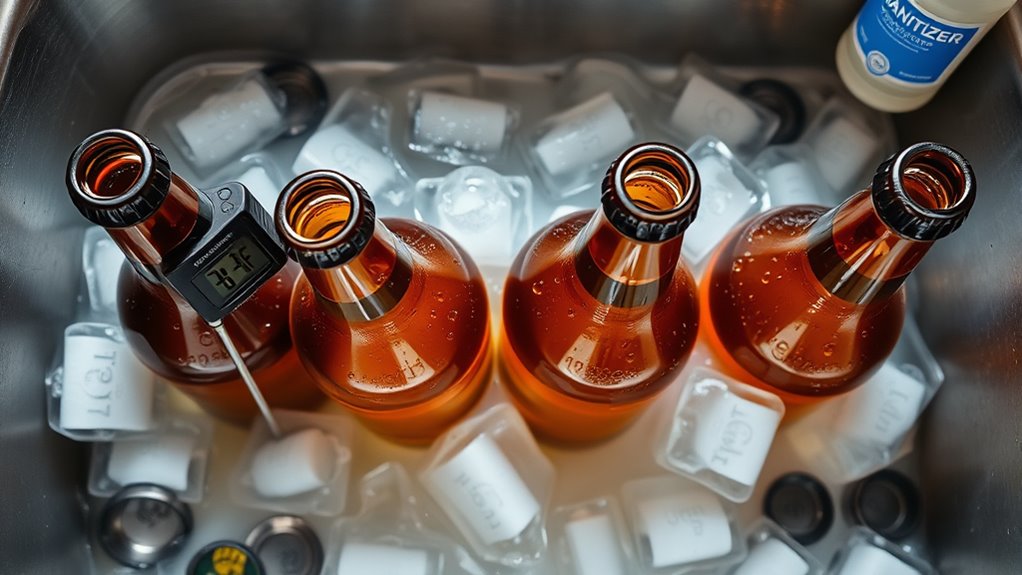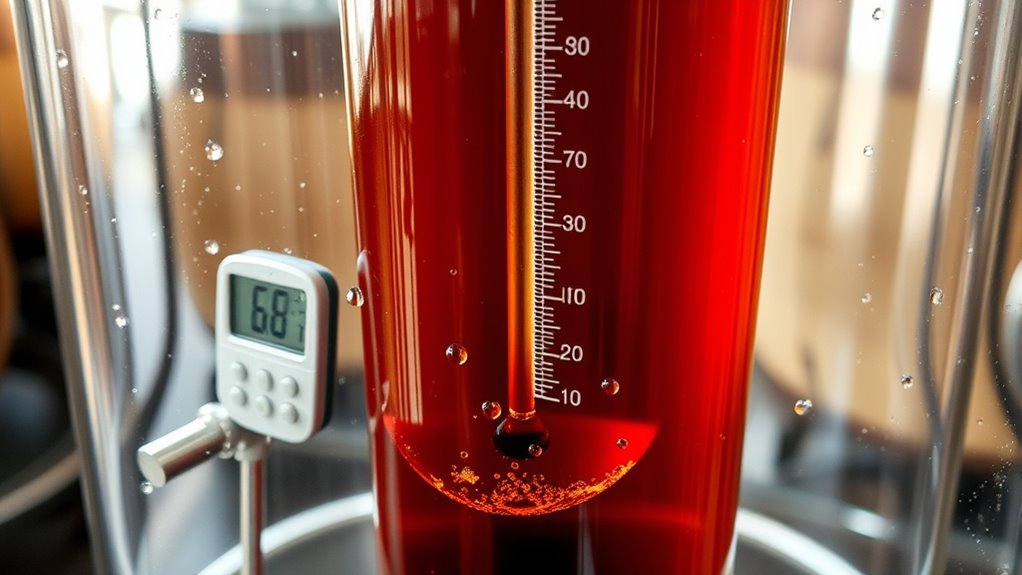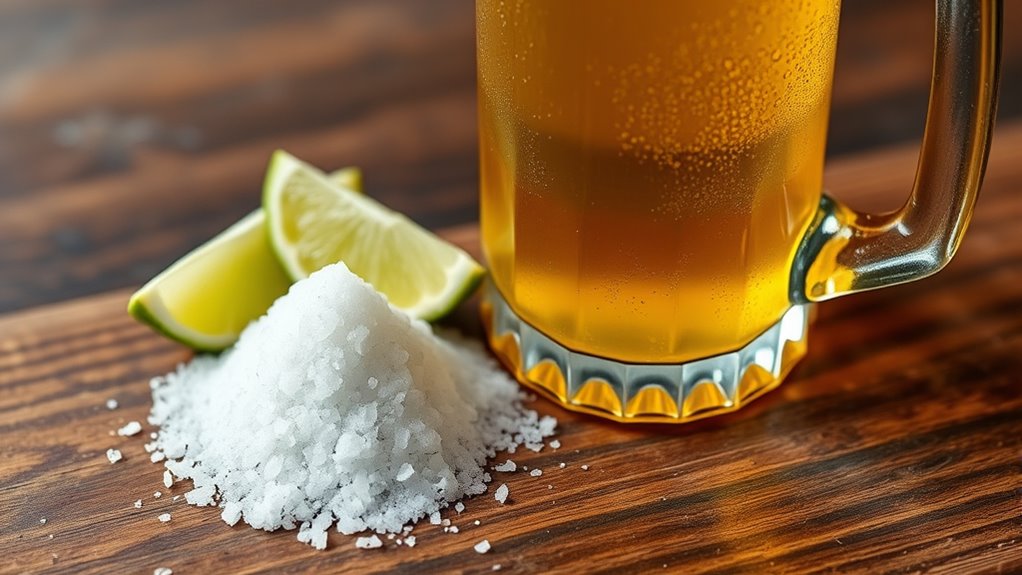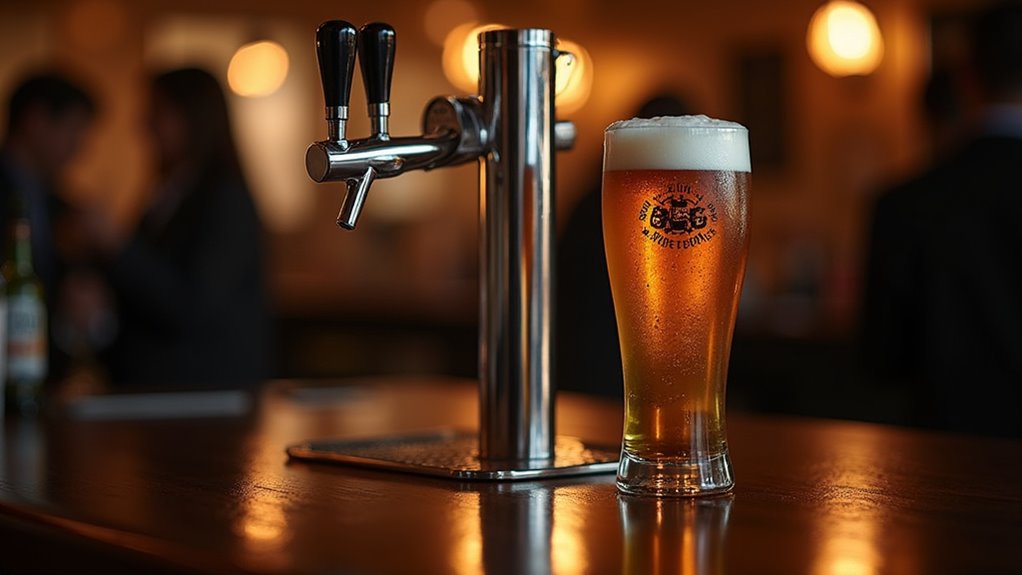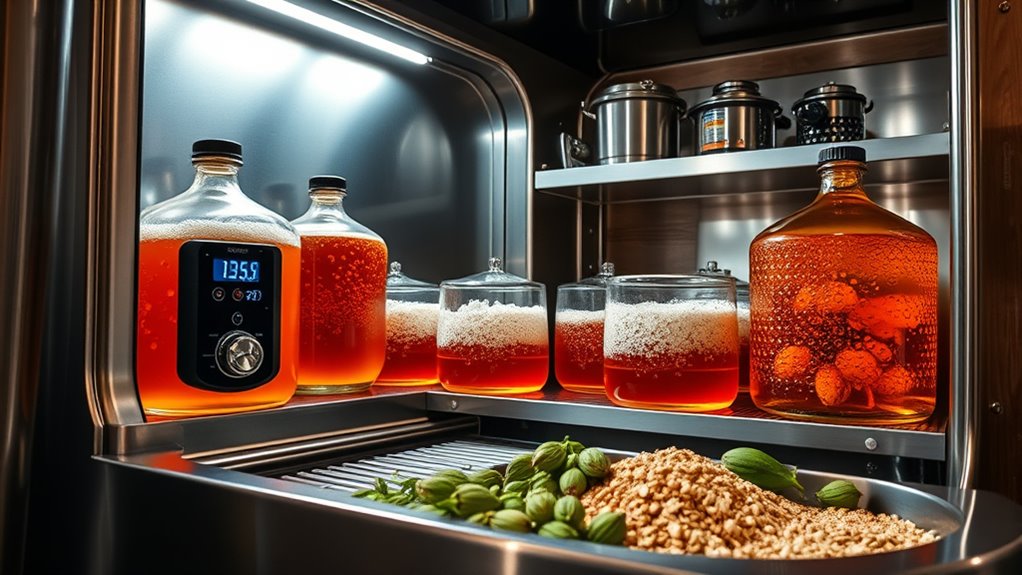Barrel aging can enhance your homebrew’s flavor, and choosing the right methods is essential. First, opt for 5-15 gallon barrels, as they allow for balanced aging and prevent overwhelming oakiness. Prepare barrels properly by sanitizing and checking for leaks. If barrels aren’t available, consider oak chips or cubes soaked in bourbon. Monitor your brew weekly, sampling small amounts to track flavor. You’ll refine your techniques and discover more effective methods for aging beer if you continue exploring.
At a Glance
- Choose 5-15 gallon barrels for manageable handling and effective flavor infusion in homebrewing.
- Rehydrate and sanitize barrels properly before aging to ensure stable and flavorful results.
- Utilize oak alternatives like chips or cubes for flavor enhancement when traditional barrels aren’t available.
- Monitor the aging process by sampling weekly to track flavor development and prevent over-oaking.
- Adjust flavors as needed during aging, allowing flexibility based on taste rather than strict timelines.
Selecting the Right Barrel Size
When you’re diving into barrel aging for your homebrew, it’s crucial to select a barrel size that suits your brewing goals. Opt for a 5-15 gallon barrel for effective flavor infusion and manageable handling.
Smaller barrels enhance the aging process, thanks to their higher surface area-to-volume ratio, which accelerates flavor extraction. Consider using once-used barrels; they impart desirable flavors without overwhelming your beer.
Choosing the right barrel size guarantees balanced flavor complexity while preventing excessive oakiness or oxidation.
Helpful Hints:
- Experiment with different sizes.
- Monitor flavor development closely.
- Always taste before bottling.
Preparing Barrels for Aging
Preparing your barrels for aging is an essential step that can greatly influence the final flavor profile of your brew. Follow these guidelines for successful barrel preparation:
Preparing your barrels is crucial for achieving the desired flavor profile in your brew.
- Rehydrate new oak barrels with water or bourbon to prevent leaks.
- Sanitize barrels using 180°F water or ozonated water, rolling bourbon inside.
- Regularly check for leaks after rehydration to maintain a stable aging environment.
- Consider using previously used barrels, as they offer unique flavors without overwhelming your beer.
Utilizing Oak Alternatives
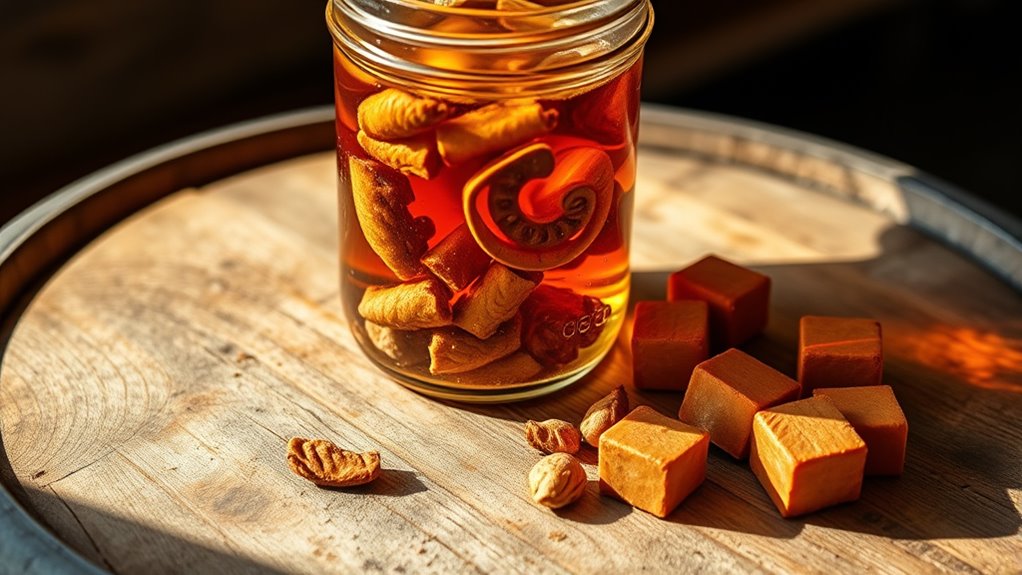
Utilizing oak alternatives can be an effective way to enhance the flavor of your homebrewed beer, especially if you don’t have access to traditional barrels.
You can use oak chips, cubes, or spirals to infuse your beer with unique flavor profiles. Chips provide rapid extraction, while cubes may take 1-2 months for ideal aging.
Soaking oak alternatives in bourbon or wine for two weeks before adding them to your beer can further enrich the flavor.
Experimenting with different types offers creative possibilities, so don’t hesitate to try various combinations to achieve your desired results in aging beer.
Helpful Hints:
- Use chips for quick flavor.
- Try cubes for deeper complexity.
- Soak alternatives for enhanced flavor.
Monitoring the Aging Process
Monitoring the aging process of your homebrew is essential for achieving the desired flavor profile. To guarantee peak barrel aging, consider these key points:
- Sample the beer weekly to track flavor development and prevent over-oaking.
- Use a drilled hole with a vini nail for minimal air exposure during sampling.
- Keep the aging environment’s temperature consistent between 68-70°F for ideal maturation.
- Document your tasting notes to identify the best time to remove the beer from the barrel.
Sampling and Flavor Adjustment Techniques
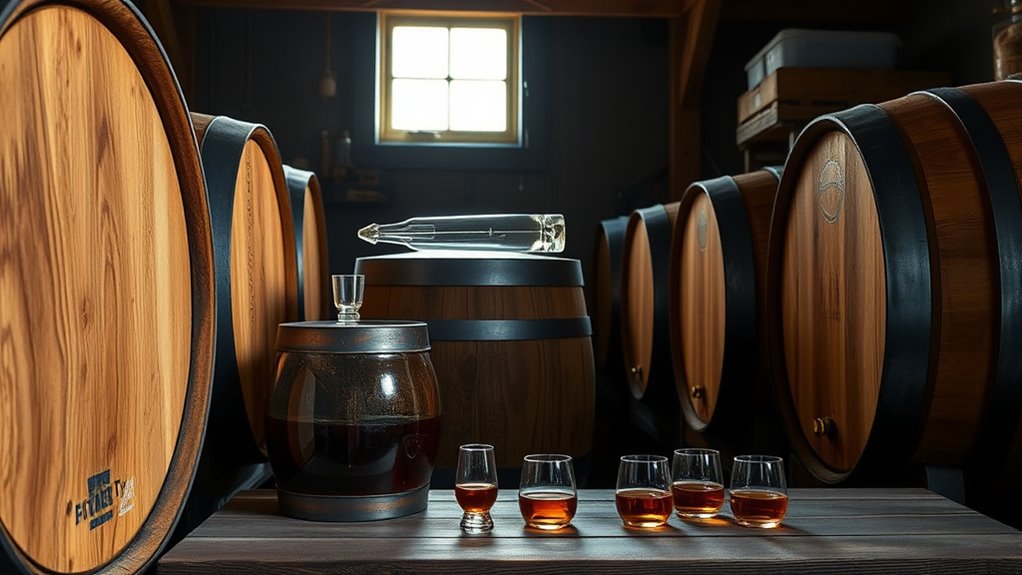
Sampling your homebrew regularly during the barrel aging process is essential for achieving the ideal flavor profile. Aim to taste at least once a week, using small samples of 1/2 to 1 ounce.
Regular sampling during barrel aging is key; taste weekly with small 1/2 to 1-ounce samples to ensure optimal flavor.
This way, you can monitor flavor development without exposing the beer to too much air. If the taste turns undesirable, consider flavor adjustment techniques, like dumping the batch or adding bourbon to enhance the barrel character.
Remember, aging time should be flexible—base your decision to remove the beer on its flavor, not a strict timeline. Frequent sampling helps guarantee your brew maintains its exceptional qualities.
Helpful Hints:
- Taste weekly.
- Use small samples.
- Adjust flavors wisely.
Best Practices for Cleanliness and Contamination Prevention
Maintaining cleanliness during the barrel-aging process is essential for preventing contamination. Follow these best practices:
- Use separate tools for different beer types to avoid cross-contamination.
- Regularly sanitize surfaces and equipment around barrel storage areas to minimize infection risks.
- Sample beer through a drilled hole with a vinnie nail, reducing air exposure and oxidation.
- Sanitize barrels with 180°F or ozonated water, rolling bourbon inside for effective cleaning.
